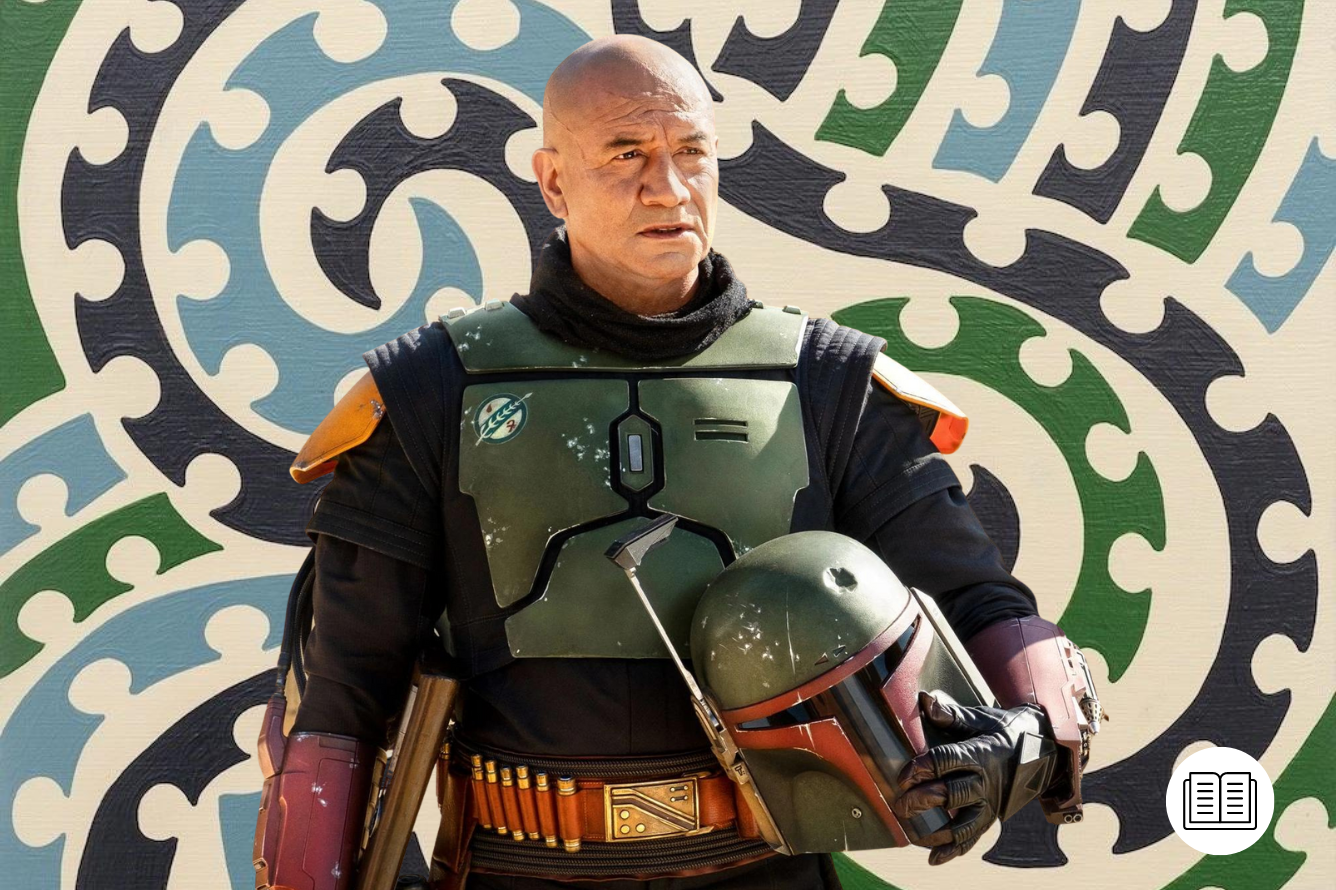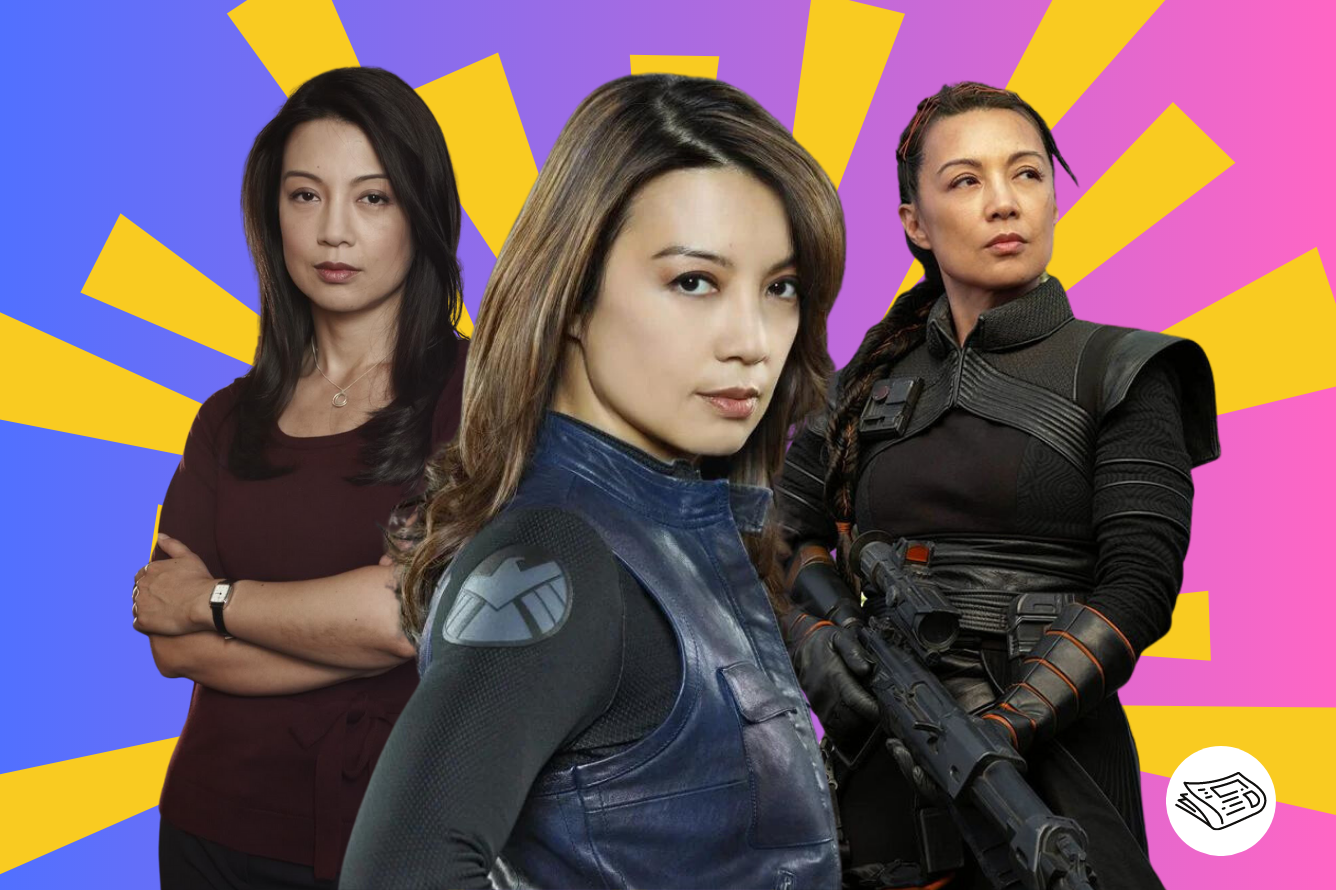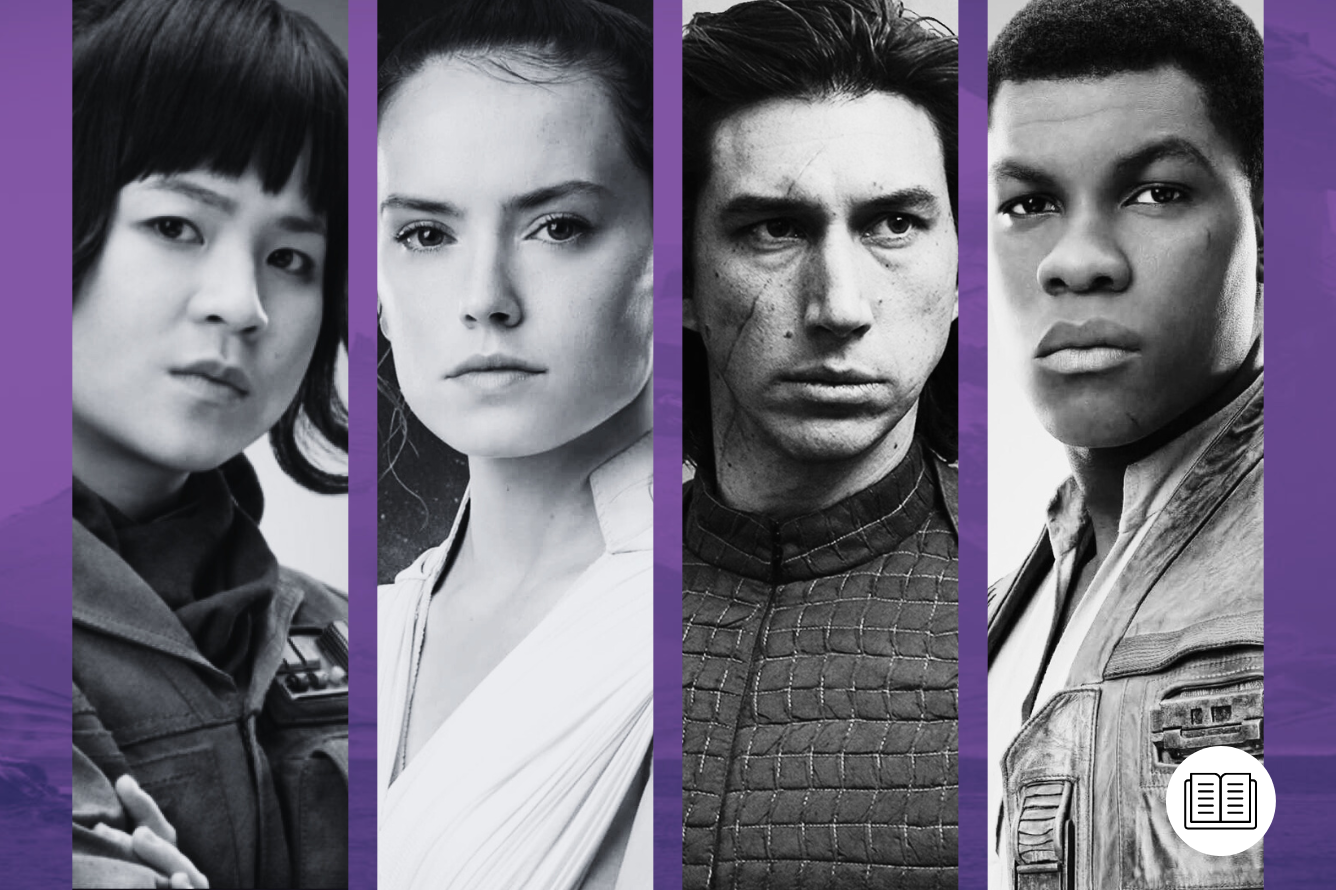As Disney premieres The Book of Boba Fett, another addition to the ever-growing catalog of the expansive and booming Star Wars universe within its tenure, the stage is set for a reminiscence and study on the evolution of this popular character; Boba Fett, and how this character's history mirrors that of the hyper-popular franchise we know today.
Not without its myths, dark undertones, and problem areas of course… Boba Fett first appeared in the Original Trilogy, with little dialogue or “movement”, or agenda for that matter. The silent enigma behind the scrappy armor sparked the imaginations of Star Wars fans immediately. Though Fett would presumably see his fate sealed in Star Wars: Episode VI – Return of the Jedi (1983) to the heavy disappointment of fans at the time, his mythos remained and so did the possibility of what his character could be capable of.
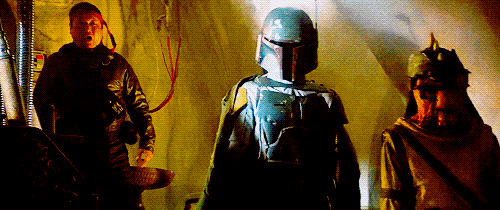
While Fett endured in fan fiction, comics, animations, and more extended Star Wars material, it would not be until the new millennium in George Lucas’ divisive and adventurous Prequel Trilogy he would be unmasked as Māori actor Temuera Morrison (in the form of Boba’s clone father Jango Fett, of course). He has gone on to become the face behind the iconic warrior’s armor. Portraying Jango Fett in the prequels, Boba Fett in The Mandalorian, and every single clone in the Republic Army, which all share all his distinctive features. Making Morrison’s face, voice, and general persona a handy currency in the Star Wars cinematic universe.
Interpreting the Body Behind the Mask
Nevertheless, Boba Fett was originally a white man in the original films, portrayed by actor Jeremy Bulloch. So why, when it came to re-casting and representation, did Lucas choose a Polynesian actor? Was it simply because he envisioned a hardened warrior being of tribal descent and dark skin? Probably, Lucas had a way of injecting a politically-charged character into Star Wars, only to suck them dry as the story develops.
When he began casting the Original Trilogy, Lucas considered a black man for Han Solo and an East Asian for Obi-Wan Kenobi. This roughly translates to typical American stereotypes in stories; the black man as the cool and suave criminal, the East Asian as the “mentor” and Samurai-type master. You don’t have to look further than the actual characters that were cast as black actors in the universe to see some of these hidden stereotypes at work. By 2005, just two black men of consequence, Lando Calrissian and Mace Windu, existed in the whole universe according to Star Wars.
Similarly, to Boba and Jango. They either amount to stereotypical representations or are without any significant effect on the plot other than driving it further. Lando is the most developed but before the role was revived by Donald Glover for the Han Solo spin-off, Solo: A Star Wars Story (2018), Lando was another Han Solo, but one who actually did betray the main characters, almost killing them all before gaining some kind of redemption in Return of the Jedi. The fact is despite first appearing as a handsome and sophisticated leader, the first black representation in Star Wars turned out to be a rival criminal to our hero and one who was genuinely not to be trusted…
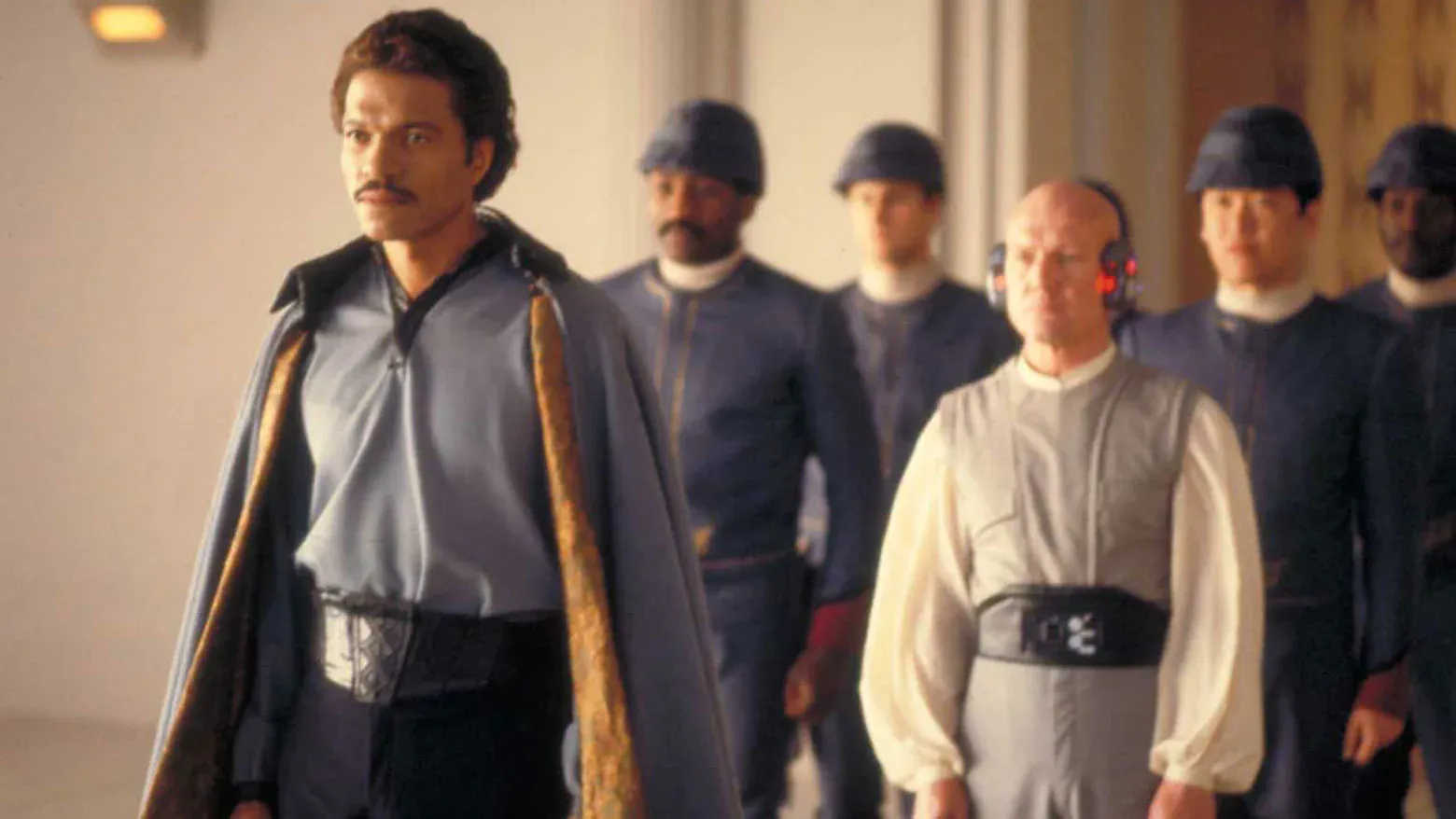
You can read more about this in John Paul Pianka’s essay; Race, Gender and Colonialism in the Star Wars Universe. John goes on to disassemble how, especially in Lucas’ era, alien races are used to represent diversity; instead of intra-diversity between human characters.
I’d like to say this has been the biggest change between Star Wars under Lucas and under Disney, who made cake out of Leia being a general and a princess and a Jedi. Which Lucas largely ignored after the first film in ’77. Another example is her mother, Padmé, who despite being a major political leader is largely served up as a love interest whose occupation practically becomes pregnancy. Eventually, she’s denominated to an incubation chamber for future protagonists, Luke and Leia. Padmé has no real effect or agency in the events of the story outside of her being the product of Anakin’s passionate pursuits.
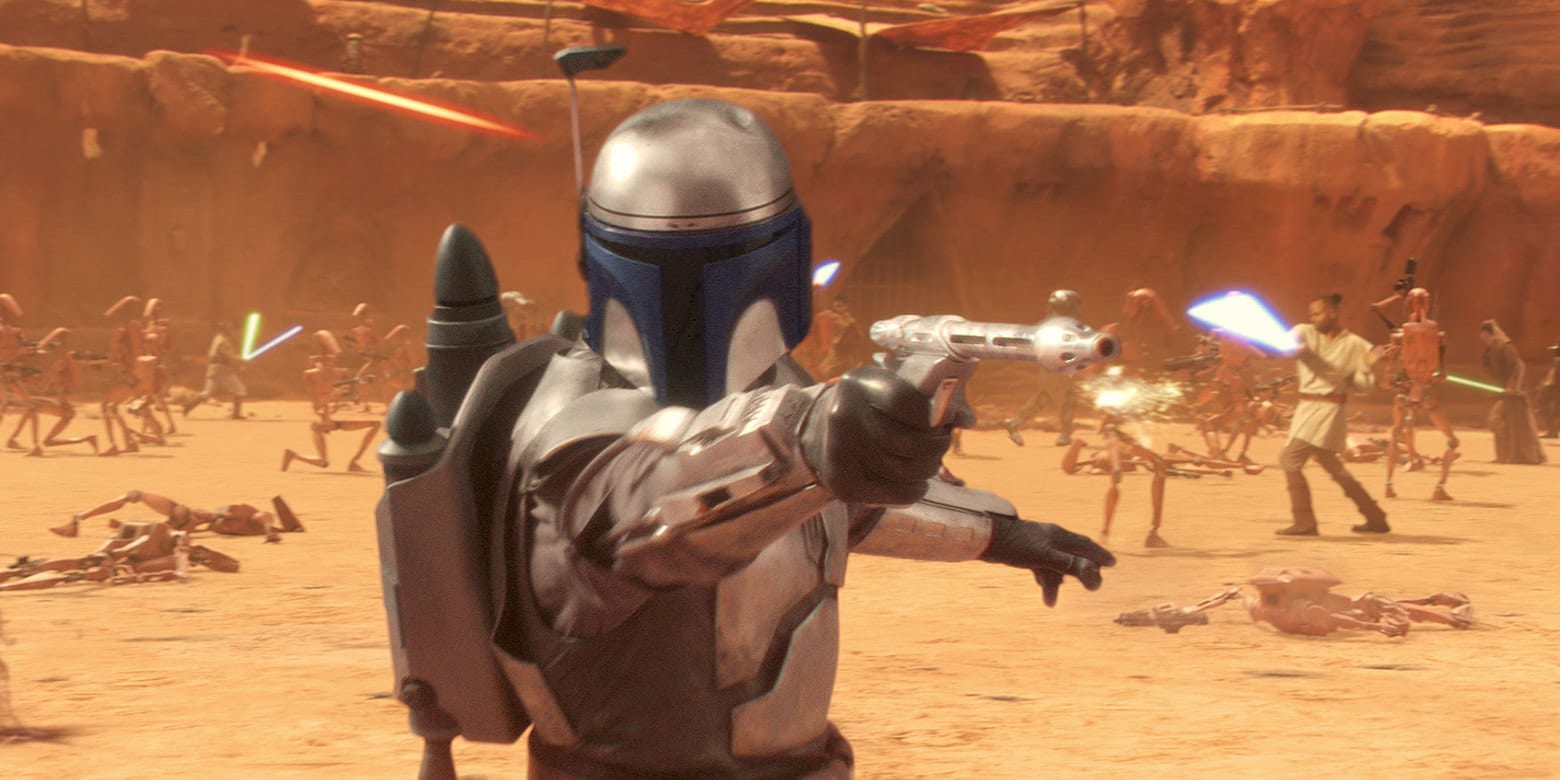
How does this relate to Boba? Well, despite the unadulterated “coolness” of Morrison’s characters and their Man With No Name inspirational tones. Boba, Jango, and all the Clone Troopers weren’t given an ounce of agency in the Star Wars saga on the big screen, most were introduced as menacing and then disposed of very quickly. Even Captain Typho, played by another Māori actor, Jay Laga’aia, is pretty much a subservient subject to Padmé and nothing else, incapable of making any real choice or decisions despite being head of security by title. I would like to add, Padmé’s previous bodyguard was a black man; Anglo-Ghanian actor Hugh Quarshie, the succession of which doesn’t even hold any weight.
The deaths of Jango, Boba, and the cloned soldiers of the Republic dwell in the realm of anti-climatic and fail to make ripples in any of the stories throughout the saga, they were treated as meaningless bodies to be disposed of. Used and controlled by the white characters who triggered shifts in the macro-story. It’s thanks to Morrison’s perfectly measured performance and cadence that this doesn’t feel totally horrifying to watch unfold. His face simply exudes a deep kind of humanity that is not of this modern world, or one we see in sci-fi. His face is a real one. Therefore, his face being cloned and inserted into so many different shells feels somewhat comforting, even if that isn’t the intention.
The Evolution of Boba Fett Beyond the Prequels
Now that I think about it, Morrison was probably the first Polynesian actor I’d ever seen in a blockbuster film. It only crosses my mind now, the tone shift in his first appearance in 2002’s Star Wars: Episode II – Attack of the Clones is a major pivot in that film. It’s the first real dramatic scene, where two actors give good back and forth, jammed with subtext, it’s Temuera holding his ground. Arguably, Ewan McGregor is the only performer who gives a serviceable performance in this film, but Morrison does so too. Very quickly establishing himself as a major player who can contend with the heights of the drama the film was capable of. Even if he does die in the next act. In that scene alone, where Boba is still a boy, portrayed by Daniel Logan and Jango takes lead as his idyllic clone father, we see Morrison set the foundation not just for Boba Fett as an adult. But for the clone army, for the Mandalorian people, and for Māori and Polynesian representation on screen.
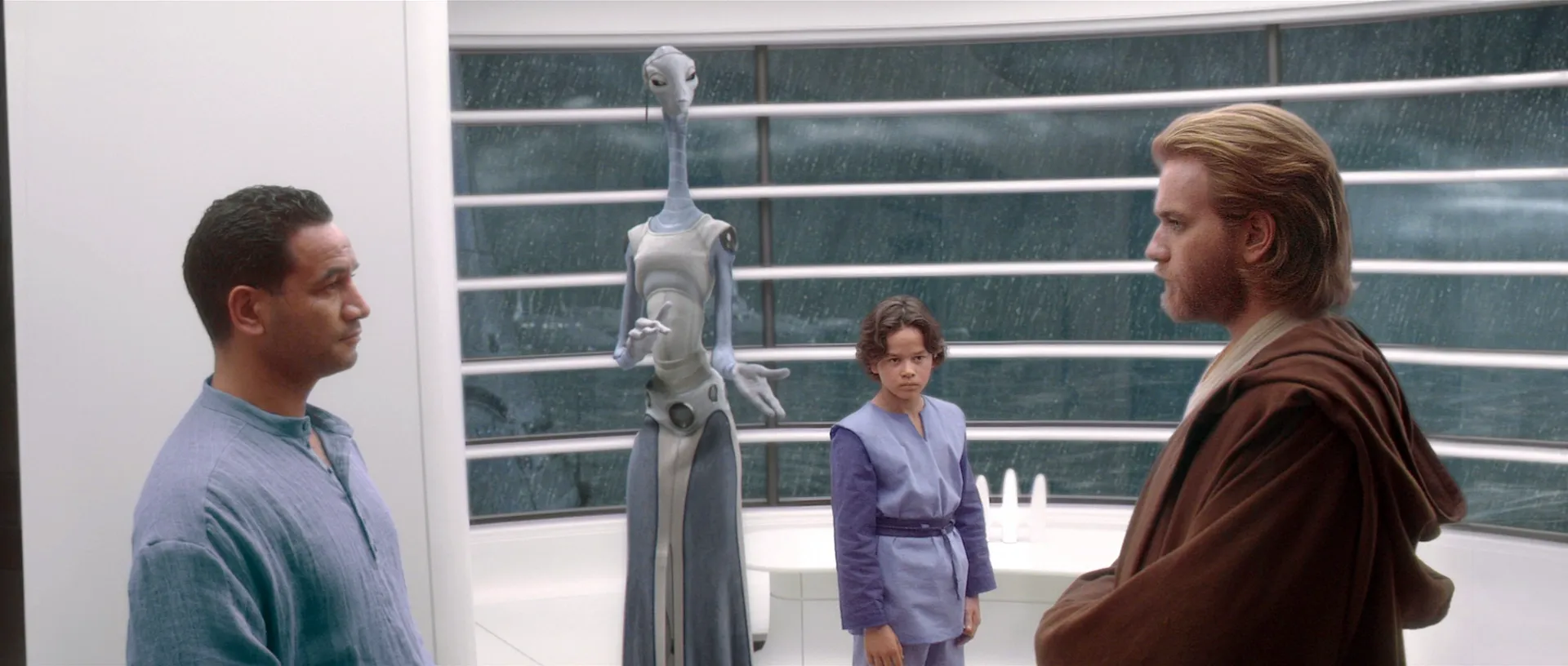
He is not just a body, not just a warrior, there is something deep in there, a peaceful code and humanity. There’s a striking use of language in this scene too, Morrison speaks an unknown tongue. My research found there was no specific language, it’s genuinely a jumble of words that sounds cool and some English words backward. But the addition to how Morrison controls the delivery of them, “Uh Boba, rood eht so-heeck.” Sounds like it’s encased in a pre-history beyond that of Star Wars. The language would not appear again. I for one, hope the connections between the Māori language (called Māori or Te Reo Māori) and his character can be more intertwined; rather than random made-up words to stand in. He made the role for himself and took great pride in it.
It’s no surprise many characters from the clone army, including Commander Cody and Captain Rex would go on to show extraordinary amounts of human spirit in the events succeeding Order 66 in Lucas’ Star Wars: Episode III – Revenge of Sith (2005). Boba Fett essentially started as an idea, a very one-dimensional one. However, with increasingly larger micro-doses over decades, fans, Morrison, and new filmmakers have prescribed more and more nuance to the character’s existence within the universe at large and Disney has finally carved the time to explore this and publish it as a rooted part of the Star Wars narrative for the average fan.
Temuera Morrison Treading Purposefully
It was always galling that Morrison – someone who marked his arrival with the potent New Zealand drama Once Were Warriors (1994) – as the bitter and abusive Jake Heke – spent those credits so poorly overseas as a handsome beefcake in the grim Pamela Anderson vehicle Barb Wire (1996), the infamously messy Island of Dr. Moreau (1996), baffling sequel Speed 2: Cruise Control (1997), and the direct-to-video dross From Dusk till Dawn 3: The Hangman’s Daughter (1999). He was, by his own admission, a little too quick to chase a payday and make Hollywood happen.
Although, as noted above, there’s a deftness and humanity to Jango Fett, Morrison’s role in Attack of the Clones is the final act in this slightly underwhelming era. It kept him working, but it said very little about who he was as an actor – for that, Once Were Warriors, is our anchor. Effectively a Māori Streetcar Named Desire with Morrison as its volatile Marlon Brando, the film explores domestic violence, alcoholism, fragile masculinity, and post-colonial frustration through an indigenous lens. At a pivotal moment, Rena Owen’s Beth Heke rebukes her husband:
“Our people once were warriors. But unlike you, Jake, they were people with mana, pride; people with spirit.”
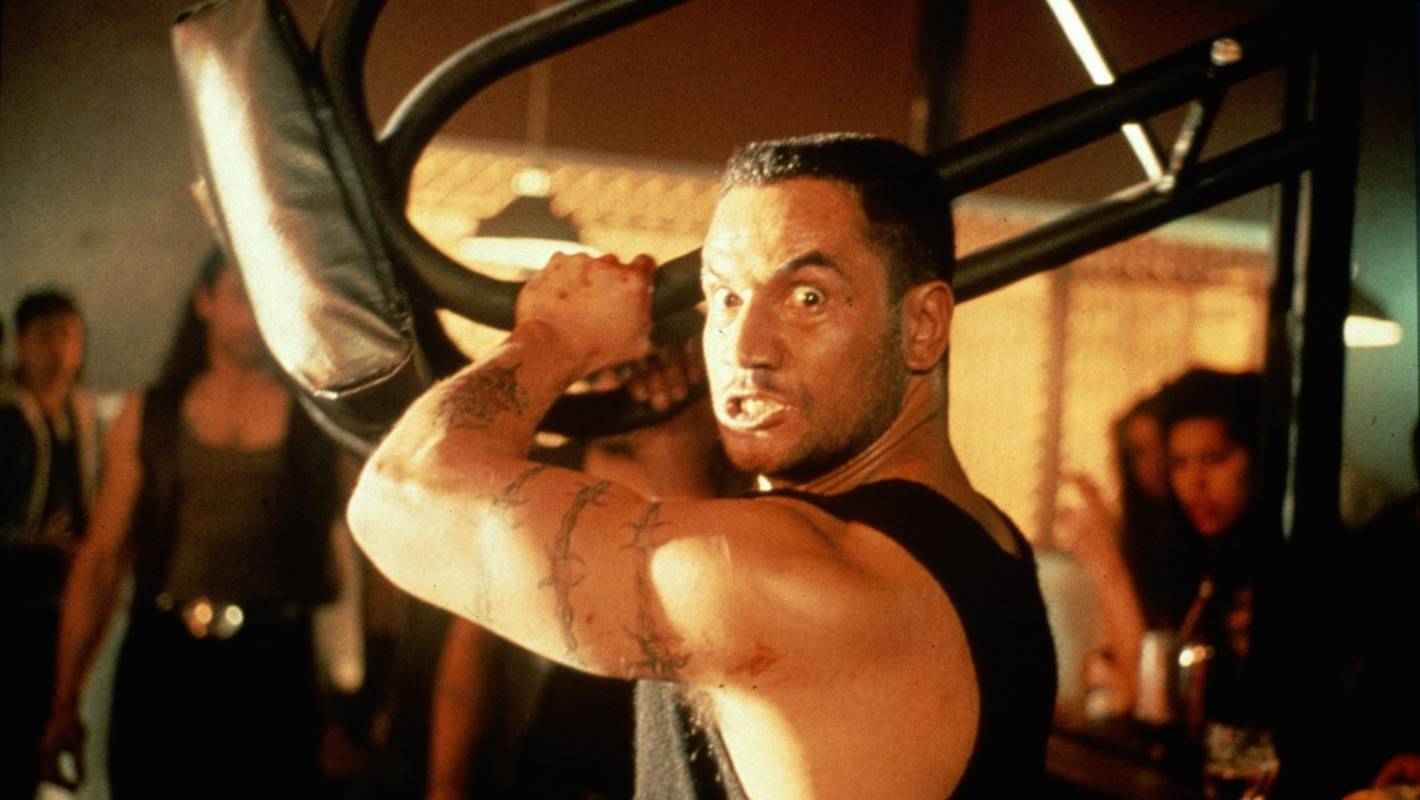
Mana – “pride and spirit” in Beth’s words – is described in the Te Ako – Māori Dictionary as “a supernatural force in a person, place or object.” It continues:
Mana is the enduring, indestructible power of the atua [sacred or supernatural ancestor] and is inherited at birth, the more senior the descent, the greater the mana. The authority of mana and tapu is inherited and delegated through the senior line from the atua as their human agent to act on revealed will. Since authority is a spiritual gift delegated by the atua, man remains the agent, never the source of mana.
It’s hard to argue that Barb Wire has much to do with mana, and perhaps Attack of the Clones too. It was filmed in Australia and the pragmatism of hiring New Zealanders (who have the right to work in Australia) might have guided the casting as much as the undeniable talent. Amongst the other Māori seen in the Prequel Trilogy is Morrison’s Once Were Warriors co-star Rena Owen as the voice of Kaminoan factotum Taun We in Episode II and senator Nee Alavar in Episode III.
The journey from journeyman heavy-with-a-heart Jango Fett to the elemental presence of Boba Fett in The Mandalorian is an interesting one, and doubtless involves a lot of intersecting elements. In the climactic battle of The Mandalorian episode ‘Chapter 14: The Tragedy’ (S2, Ep6) there was a physical presence and intensity to Fett that we simply hadn’t seen before, Mando himself having inherited the uber-cool Man With No Name vibe of the Original Trilogy. Fett’s eyes blaze as he lashes out with a wicked-looking Tusken gaffi stick, his teeth bared. Morrison told StarWars.com:
“I come from a warrior background in New Zealand. I’m a Māori and I’ve been trained. It gives me something to draw on. I was trained as a young boy back in New Zealand in the art of our haka [challenge dance]. ‘Ha’ is the breath, and ‘ka’ is the fire. I’m using my warrior background as a source of energy and as a source of confidence.
Morrison studied kapa haka from a young age, alongside his late sister Taini Morrison who went on to become a prominent teacher and performer. Whilst haka is the ritual dance used to welcome, warn, or honor, kapa haka is the full package of traditional Māori group performance and Morrison’s skills with the taiaha, a wood or whalebone spear/staff used for stabbing or striking in coordination with choreographed footwork, are directly drawn on. This was new to the character – it wasn’t just snuck in there as a detail, it was firmly in the forefront a new Boba Fett and a renewed Temuera Morrison, unapologetically present in the role.
Even his facial expressions are drawn from his culture – the pūkana is a widening of the eyes and baring of the teeth to communicate their ferocity, the rage and power rising within.
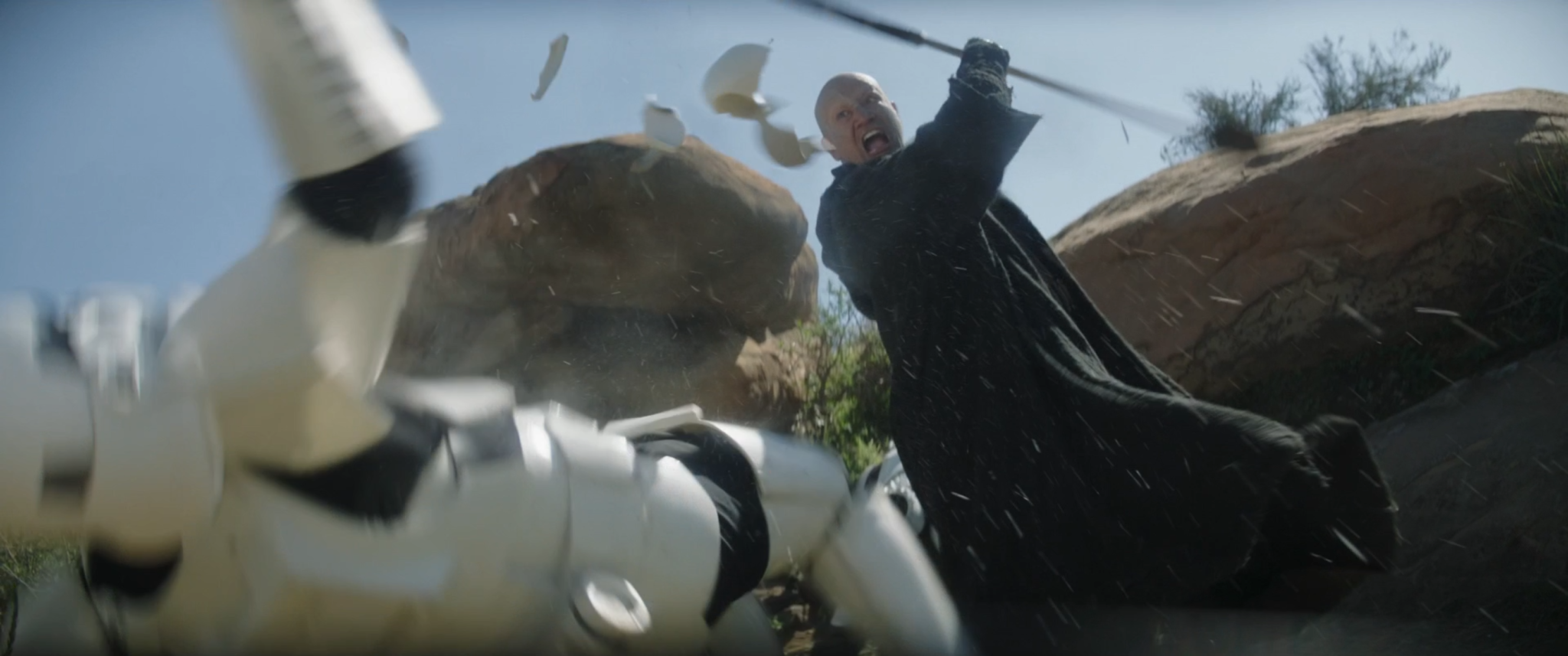
A changing culture behind the scenes is doubtless a factor and in terms of mainstream Polynesian representation, Disney’s epic Moana (2016) feels like the do-or-die moment. The creative wrangling saw Broadway king Lin-Manuel Miranda teamed with Samoan fusion musician Opetaia Foa’i, tethering the story more closely to its cultural roots than was originally the case. Morrison – who played Chief Tui, Moana’s father – told Stuff.co.nz: “I think I had my reservations, I think there were a few concerns there. But I was straight up, I told them what I thought.”
The live-action reckoning came a few years later. Morrison’s first DC superhero movie was Green Lantern (2011), but it was with Aquaman (2018) that star Jason Momoa enabled him to be reborn. Momoa, who is of indigenous Hawaiian ancestry, is outspoken about the influence Once Were Warriors had on him and has adopted the haka as a pan-Polynesian expression of his identity and values. In selecting Morrison to play lighthouse keeper Thomas Curry in Aquaman, he consciously recast Aquaman himself as Māori. A powerful statement, not least for his pairing with the white Australian Nicole Kidman as Atlanna, Queen of Atlantis, which felt incredibly refreshing simply for skirting the trope of using an ‘exotic’ real-world culture as shorthand for fantasy civilization.
Around the same time, Dwayne Johnson’s enthusiasm for his Samoan heritage – perhaps rekindled on Moana where he played mythical creator hero Maui – exploded into the open as he took the Fast & Furious franchise to Samoa for Hobbs & Shaw (2019) and performed a Siva Tau. Also exerting his influence on the filmmaking landscape is Māori actor/director Taika Waititi who was involved in Moana at an early stage, voiced IG-88 in The Mandalorian, and brought his colorful anarchy to Thor: Ragnarok (2017) and its sequel, Thor: Love and Thunder (2022). His canon is rich with Māori themes and talent, most notably his semi-autobiographical Boy (2010) and Hunt for the Wilderpeople (2016). He’s also signed up to direct an as-yet-untitled Star Wars movie.
Waititi’s energetic influence defies easy summary, but suffice to say, the world has changed significantly since Temeura Morrison lowered his silver and blue Mandalorian helmet and picked up one in green and red.
Opening The Book of Boba Fett
We arrive at The Book of Boba Fett, after a successful and inspiring run of appearances in The Mandalorian, Boba Fett returns with one major convert; agency. He is deciding his own fate, finally not a body or armor subservient to a master. Although he’s still dedicating his life to an aspect of life so often pinned to black or brown men in Hollywood, “I’m a crime lord now”, he announces in the trailer, a seemingly fervent left turn, at least it’s a story of his own choosing. This is the aforementioned change between Lucas’ franchise and Disney’s evolution of it.
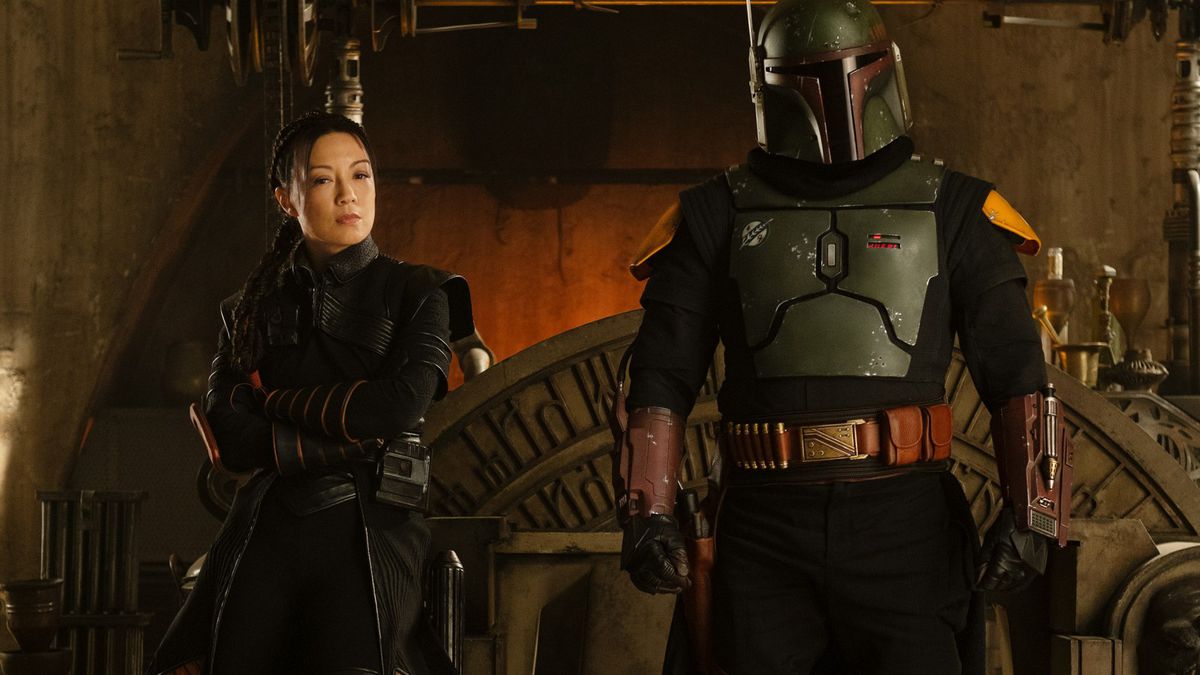
Despite his popularity, Boba Fett had more screen time in The Mandalorian than all together in the Star Wars films released before that. They finally capitalized, in the way they do so well, on the most intriguing aspects of the character. The warrior mythos, the calm and silent legend. They’ve finally given said character a voice, an opinion, and a story. Instead of using him as a tool to sell more toys. Thankfully, Robert Rodriguez is bringing the series to life, the energetic Rodriguez, a legend and inspiration in the film community, re-introduced us to the powerful and frightful nature of Boba Fett in The Mandalorian, as well as his moral code of respect and tradition, so often used as shorthand in characters of Polynesian background by the white gaze in pop culture.
It’s a nice layer of change, the deep racial identities we are known for seeing are being sown into the creativity of Star Wars, through the likes of Rodriguez, Morrison, and even Pedro Pascal. Instead of these racial identities being used as tools and devices for cogs in the saga. I’m sure many, maybe even Lucas saw no problem with his use of dark-skinned bodies behind gleaming white shells and warrior armor, committing the deeds of heroes and villains without any real stake, humanity, or even moral awareness. All the clones that appear in Episodes II and III are computer-generated. This means, in some sense, Lucas didn’t treat them as human, he didn’t even have humans on camera.
This kind of thing has an immutable effect on the growing pride behind racial identity in the 21st century and to someone of brown skin. This kind of neglect of racial theory amongst increased pride does matter. It’s just shy as coming off completely tone-deaf. At least now, the warriors, bounty hunters, and clones are going rogue, they’re creating their own stories and their own traditions… My hope is that Star Wars will do more to appreciate these traditions in a meaningful way, instead of snatching visual ideas for weightless aesthetics like Lucas did in the past.
This article was first published on December 30th, 2021, on the original Companion website.
The cost of your membership has allowed us to mentor new writers and allowed us to reflect the diversity of voices within fandom. None of this is possible without you. Thank you. 🙂


